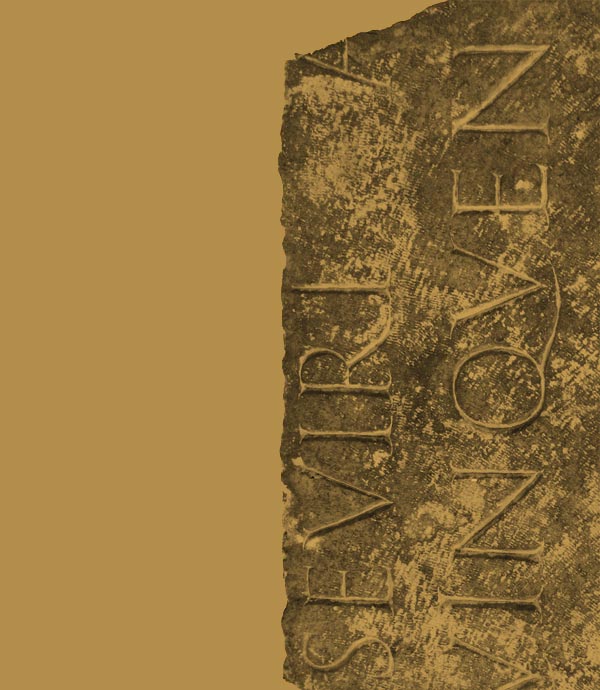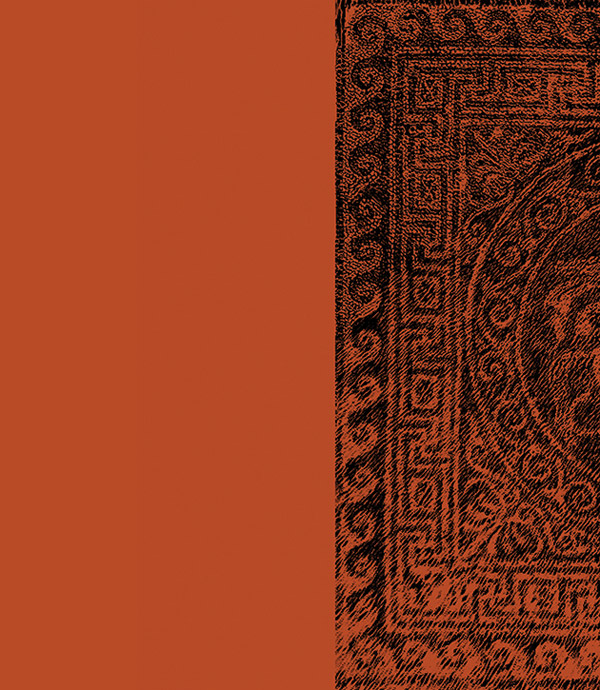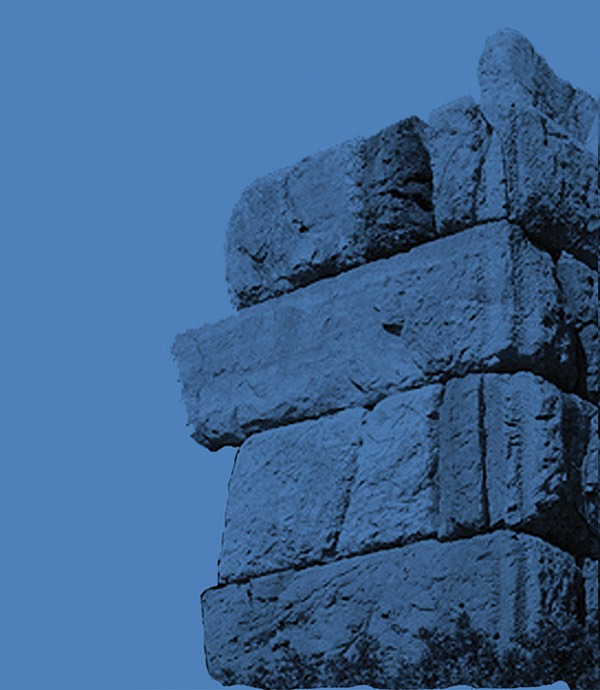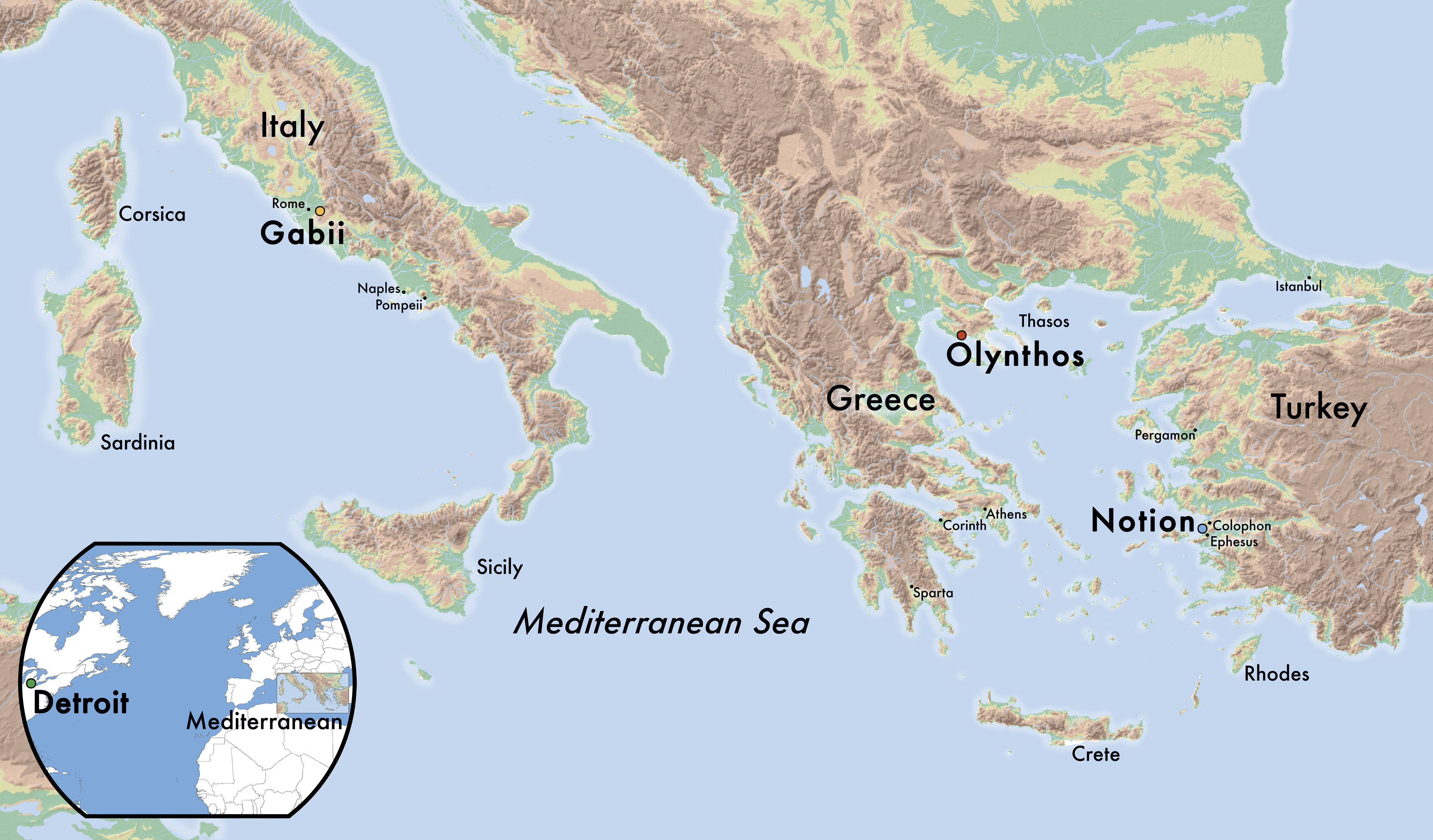Introduction
“Human beings are by nature political animals.” The Greek philosopher Aristotle wrote these words over two thousand years ago, but they remain true today. We are still political animals — animals that live in the polis, the Greek word for “city” — and just as we still read Aristotle, so are we still fascinated by the cities of ancient Greece and Rome.
Archaeologists have always been interested in how urban centers grow and change over time. In the past, the sheer size of archaeological sites and the cost of excavation forced scholars to limit their research to small areas. Today, new technologies such as aerial mapping and subsurface sensing allow archaeologists to see entire urban landscapes in high resolution. This broader perspective enables researchers to go beyond broad generalizations and to recreate detailed biographies of individual ancient cities.

This exhibition, on view at the Kelsey Museum of Archaeology from August 24, 2018 to January 6, 2019, showcases three ancient cities currently being studied by Kelsey archaeologists — Gabii in Italy, Olynthos in Greece, and Notion in Turkey — and compares them with modern Detroit in the USA, focusing on urban rebuilding projects involving students and faculty of the University of Michigan’s Taubman College of Architecture and Urban Planning. What do the biographies of these ancient urban centers reveal about how their citizens responded to stress and change? What can we learn from the choices they made, and how can we apply those lessons to understanding a 21st-century city?
One of the challenges facing modern cities such as Detroit is the power of entrenched ideas about what is “normal” and “appropriate” for cities. A historical perspective, which draws attention to the fact that cities in different times and places have often developed along very different lines, can help to liberate contemporary urban planners and citizens to imagine alternative futures for their communities. In addition, modern techniques of archaeological investigation, such as the study of soil stratification or the analysis of satellite imagery, may provide fresh approaches to issues addressed by contemporary planners and thinkers.
Join archaeologists, architects, urban planners, and citizens as we explore cities of the past, present, and future, asking the following questions:
- How do modern archaeological methods facilitate the study of ancient cities?
- How can the study of the past help illuminate the challenges and opportunities facing modern cities such as Detroit?
Review of the Exhibition
The American Journal of Archaeology published a review of the Urban Biographies exhibition, “Technologies and Narratives of Urban Archaeology at the Kelsey Museum,” by Seth Bernard.
Public Events
- September 9, 2018 Christopher Ratté, Curator Tour
- September 25, 2018 Opening Lecture and Reception: “Ecology and the Ancient City: The Case of Pergamon (Turkey) and Its Microregion,” lecture by Felix Pirson, Director of the Istanbul branch of the German Archaeological Institute (DAI) Video of the lecture
- October 21, 2018 “Family Day: Ancient Cities
- October 24, 2018 “An Evening of Classics,” presentations on Gabii, Olynthos, and Notion and dialogue with Geoff Emberling, Kelsey Museum Associate Research Scientist
- October 28, 2018 In Conversation: Excavating Fact and Fiction at the Kelsey and UMMA
- Postponed till Spring 2019 New Technology in Archaeology Workshop
- December 1, 2018 Kathy Velikov, Curator Tour








